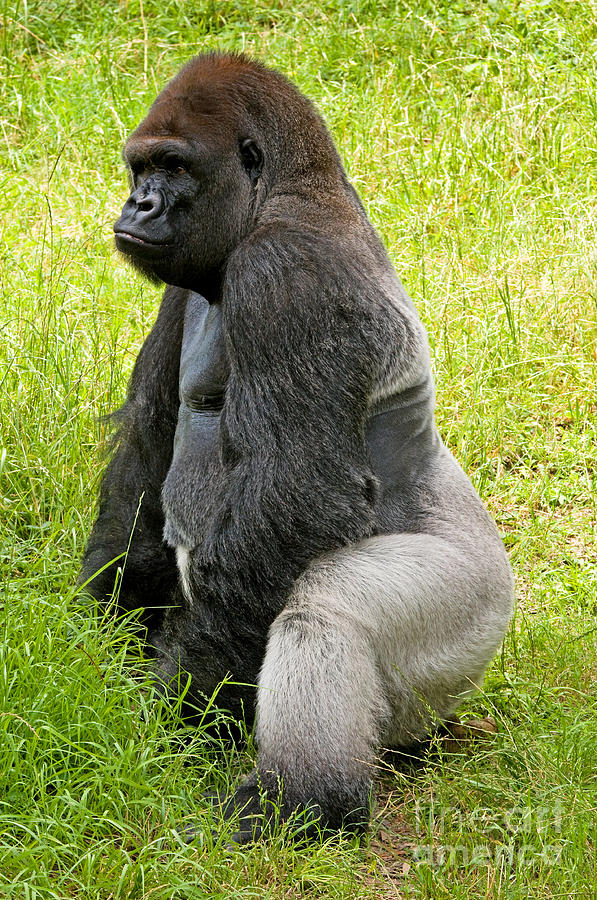
Koko was reported to use language deceptively, and to use counterfactual statements for humorous effects, suggesting an underlying theory of other minds. Koko was reported to use meta-language, being able to use language reflexively to speak about language itself, signing "good sign" to another gorilla who successfully used signing. She had been reported to relay personal memories. At age 19, Koko was able to pass the mirror test of self-recognition, which most other gorillas fail. Patterson reported that Koko made several complex uses of signs that suggested a more developed degree of cognition than is usually attributed to non-human primates and their use of communication for example, Koko was reported to use displacement (the ability to communicate about objects that are not currently present).
#Western lowland gorilla intelligence how to#
Despite her dexterity and literacy, she was never taught how to write. Koko's training began at the age of 1 and she had a working vocabulary of more than 1,000 signs, which she was able to combine in complex ways. Patterson reported that Koko's use of signs indicated that she mastered the use of sign language. Characteristics Use of language "Koko as the Voice of Nature", a speech in sign language messaging to the 2015 Paris Climate Conference, written in Sutton SignWriting At the preserve, Koko also met and interacted with a variety of celebrities including Robin Williams, Fred Rogers, Betty White, William Shatner, Flea, Leonardo DiCaprio, Peter Gabriel, and Sting. Koko was later featured on the cover of National Geographic in 1985 with a picture of her and her kitten, All Ball. The cover picture was an image of Koko taking her own picture in the mirror. In 1978, Koko gained worldwide attention as she was pictured on the cover of National Geographic magazine. Eventually, Koko remained with Patterson, supported by The Gorilla Foundation, which Patterson founded to support gorilla research and conservation. Koko was loaned to Patterson and Pasternak under the condition that they would spend at least four years with her. Patterson along with Charles Pasternak originally cared for Koko at the San Francisco Zoo as part of their doctoral research at Stanford University after Koko came to the zoo's hospital. Koko remained with her mother until the age of one when Koko was taken to the zoo's hospital to be treated for a life-threatening illness. Koko was the 50th gorilla born in captivity and one of the first gorillas accepted by her mother in captivity. Koko was born on July 4, 1971, at the San Francisco Zoo to her biological mother Jacqueline and father Bwana. However, she scored between 70 and 90 on various infant IQ scales, and some experts, including Mary Lee Jensvold, claim that Koko " language the same way people do". It is generally accepted that she did not use syntax or grammar, and that her use of language did not exceed that of a young human child. Koko is said to have understood nouns, verbs, and adjectives, including abstract concepts like "good" and "fake", and was able to ask simple questions. Pullum has called Koko's claimed abilities "mythical", writing that she never did more than "flailing around producing signs at random", and criticized much press coverage of Patterson's claims as "sentimental nonsense". Īs with other great-ape language experiments, the extent to which Koko mastered and demonstrated language through the use of these signs is debated. Koko's life and learning process has been described by Patterson and various collaborators in books, peer-reviewed scientific articles, and on a website.

It was reported that Koko understood approximately 2,000 words of spoken English, in addition to the signs.

In contrast to other experiments attempting to teach sign language to non-human primates, Patterson simultaneously exposed Koko to spoken English from an early age. This puts Koko's vocabulary at the same level as a three-year-old human. Her instructor and caregiver, Francine Patterson, reported that Koko had an active vocabulary of more than 1,000 signs of what Patterson calls "Gorilla Sign Language" (GSL). Koko gained public attention upon a report of her having adopted a kitten as a pet and naming him "All Ball", which the public perceived as her ability to rhyme. 'fireworks child', is of Japanese origin and is a reference to her date of birth, the Fourth of July. Koko was born in San Francisco Zoo, and lived most of her life at The Gorilla Foundation's preserve in the Santa Cruz Mountains.

Hanabiko " Koko" (J– June 19, 2018) was a female western lowland gorilla.


 0 kommentar(er)
0 kommentar(er)
